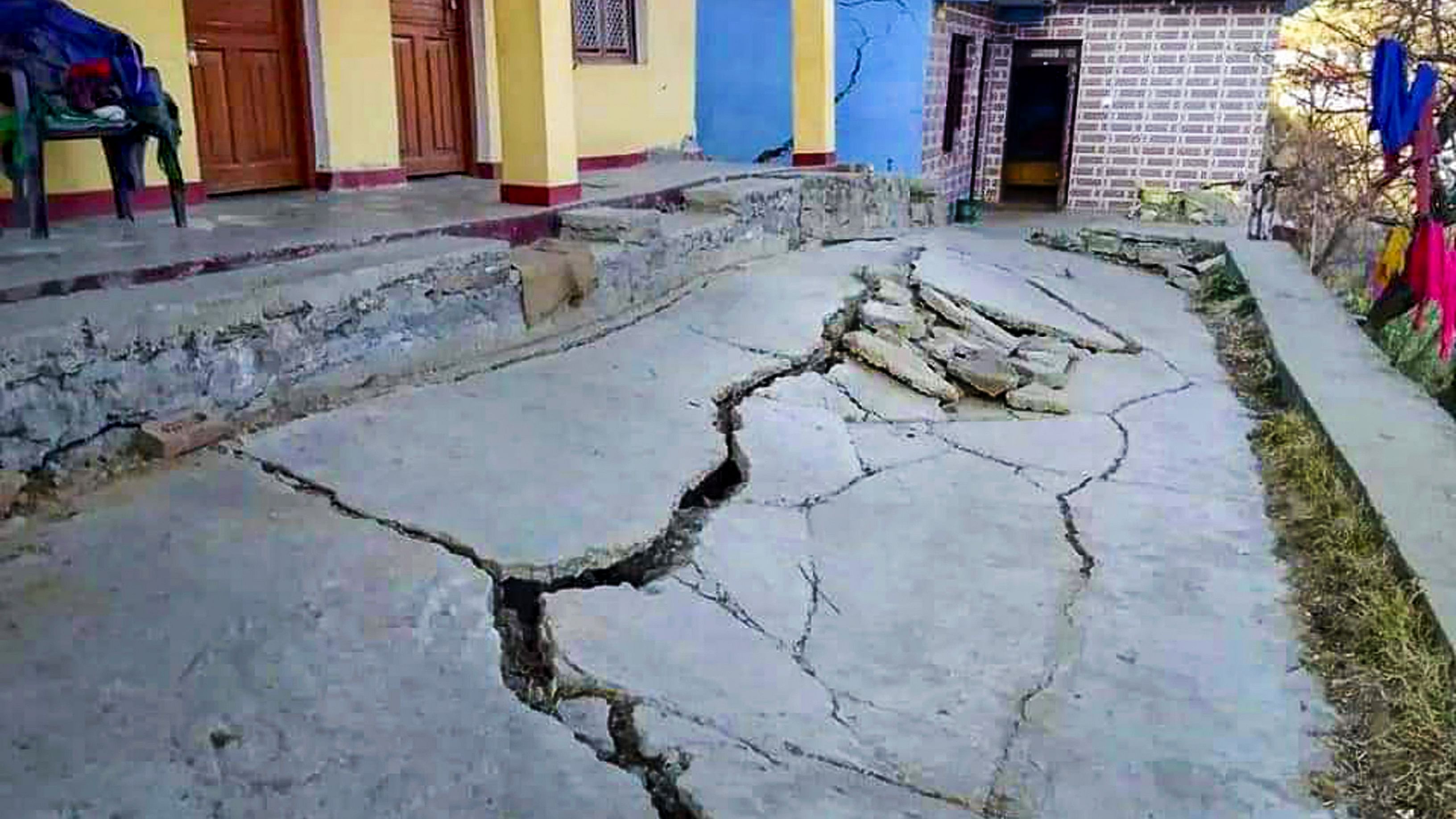
For half-a-century, experts have warned about the vulnerability of Joshimath, which is situated on the debris of an old-landslide in the middle of a highly seismic zone and surrounded by numerous rivers and streams cutting their slopes. And yet the policy makers allowed the town to grow exponentially without any scientific planning, leading to the current situation in which the holy town is sinking.
"The town is fully stressed. We need to immediately conduct a geo-technical study to find out how much load it can withstand. Moreover, the drainage system needs to be relaid so as not to hinder the natural flow of the water as permanent solutions are required for the town,” Kalachand Sain, director of Wadia Institute of Himalayan Geology, Dehradun told DH.
Uttarakhand Chief Minister Pushkar Singh Dhami, who reviewed the ground situation on Saturday, ordered the immediate evacuation of around 600 families living in houses which have developed huge cracks and are at risk. All construction activities related to NTPC's Tapovan-Vishnugad hydro power project, Char Dham road project and Helang bypass by the BRO have been put on hold.
Scientists and environmentalists, however, said such short term measures would not be of much help as experts’ views on the town’s vulnerability was persistently ignored since the Mishra Commission report of 1976 that recommended banning of heavy constructions around Joshimath. The Commission noted that the town was located in an old landslide zone and sinking.
Being the gateway to Badrinath and Hemkunt Sahib shrines as well as the popular tourist site of Auli, Joshimath witnesses a steady flow of pilgrims and tourists throughout the year. Presence of an army brigade also means regular movement of troops and heavy vehicles, and road construction activities.
Despite the environmental vulnerabilities, a number of hydro-power plants have been sanctioned around Joshimath, the biggest of which is NTPC’s 520 MW Tapovan-Vishnugad project on Dhauliganga river that experienced the February 2021 flash flood killing more than 200 individuals.
"There are a lot of unplanned excavations and blasting around Joshimath. It is possible that some of the sites may not have been filled up properly after excavation. A lot of buildings too have come up, going beyond the carrying capacity of the underlying rocks,” said Sain, whose institute is a part of the expert team probing the subsidence and its consequences.
There is strong resentment against the government for ignoring the warnings with some of the activists blaming the NTPC's Tapovan-Vishnugad hydel project mainly responsible for the present situation. In fact, concerns on the controversial project were raised for more than 15 years in several reports and studies.
"We have been drawing the attention of authorities for the past 14 months. But we were not heeded. Now when the situation is getting out of hand, they are sending expert teams to assess things," said Atul Sati, convenor, Joshimath Bachao Sangharsh Samiti. "If attention was paid in time to what we were saying things would not have been so alarming in Joshimath.”
